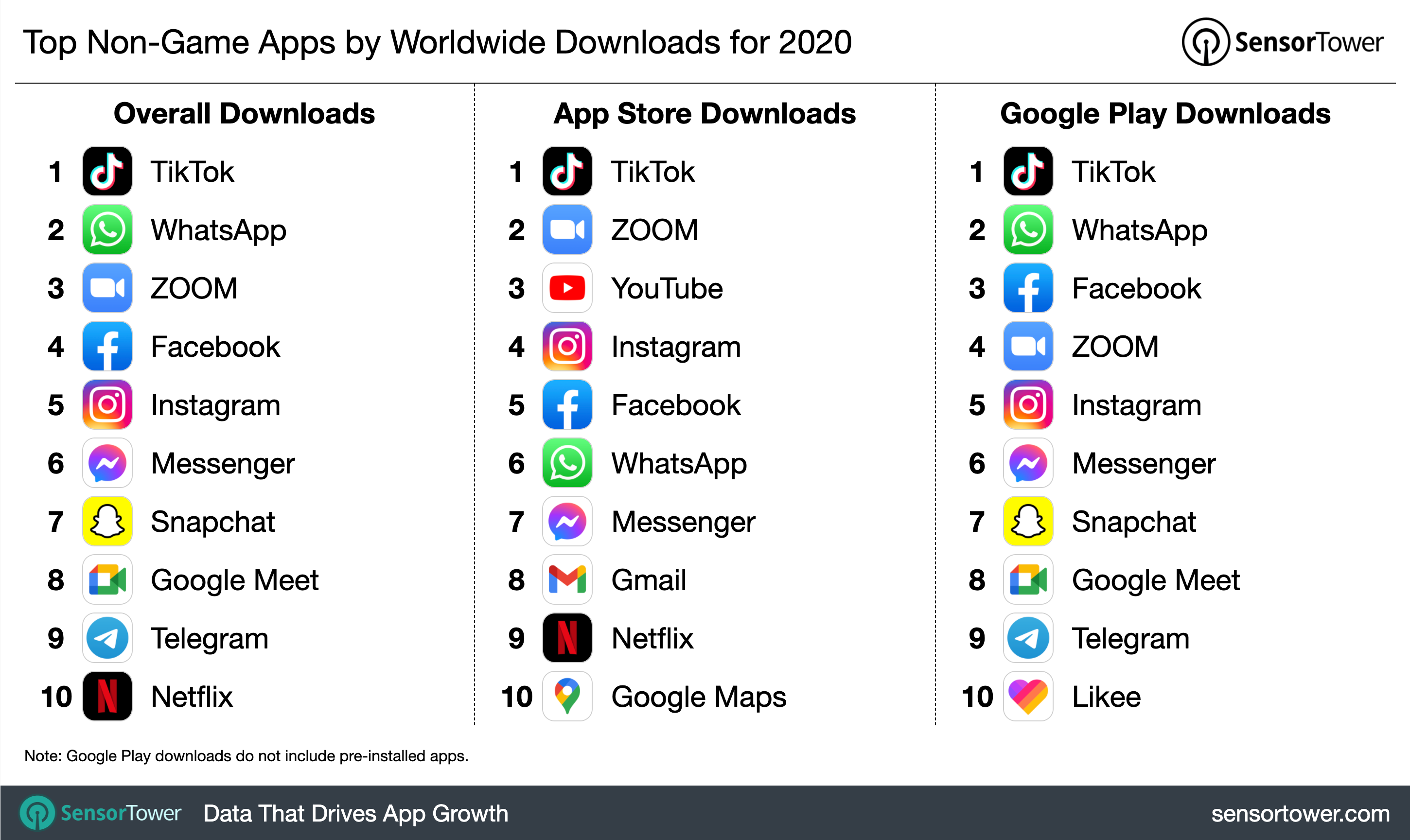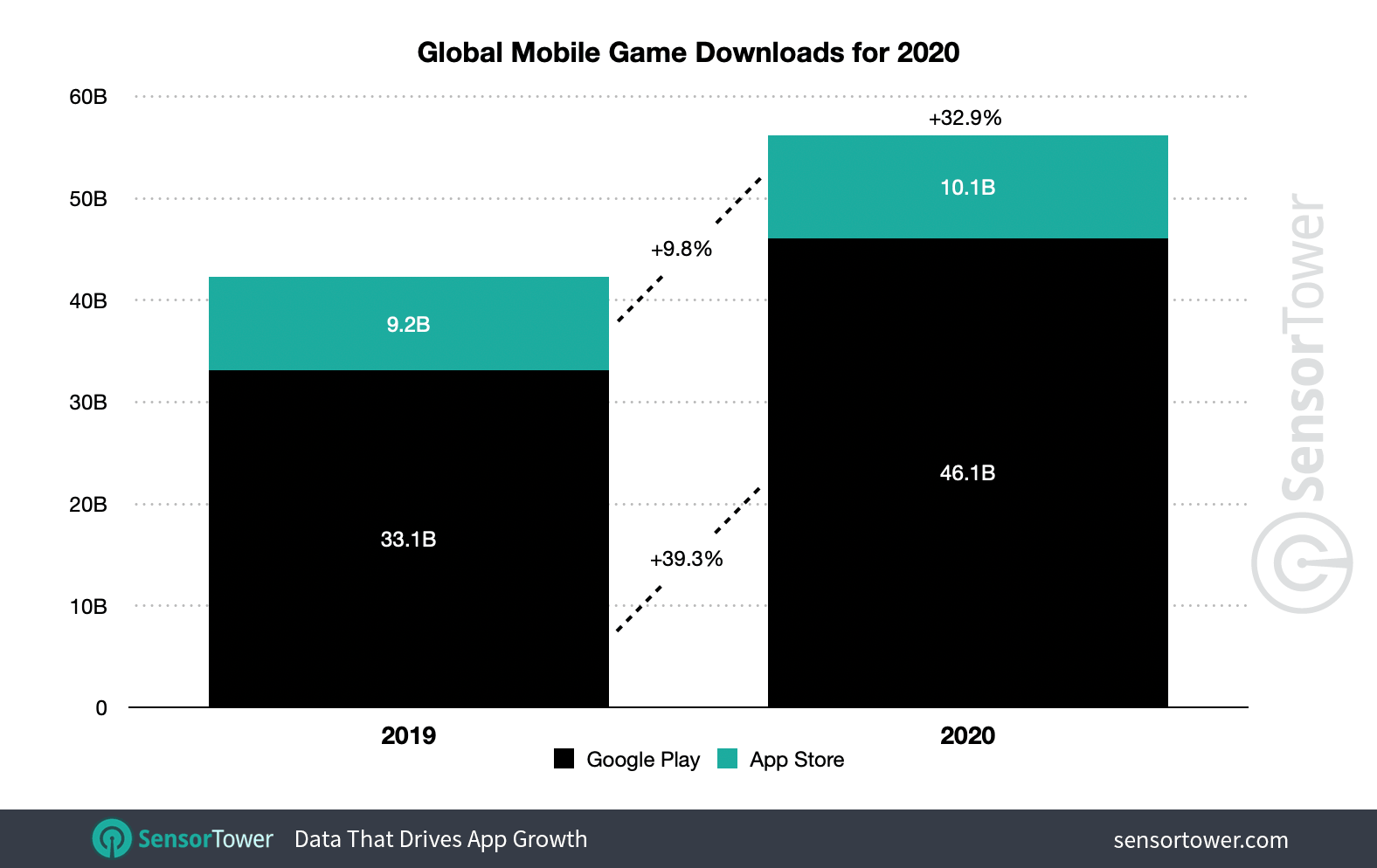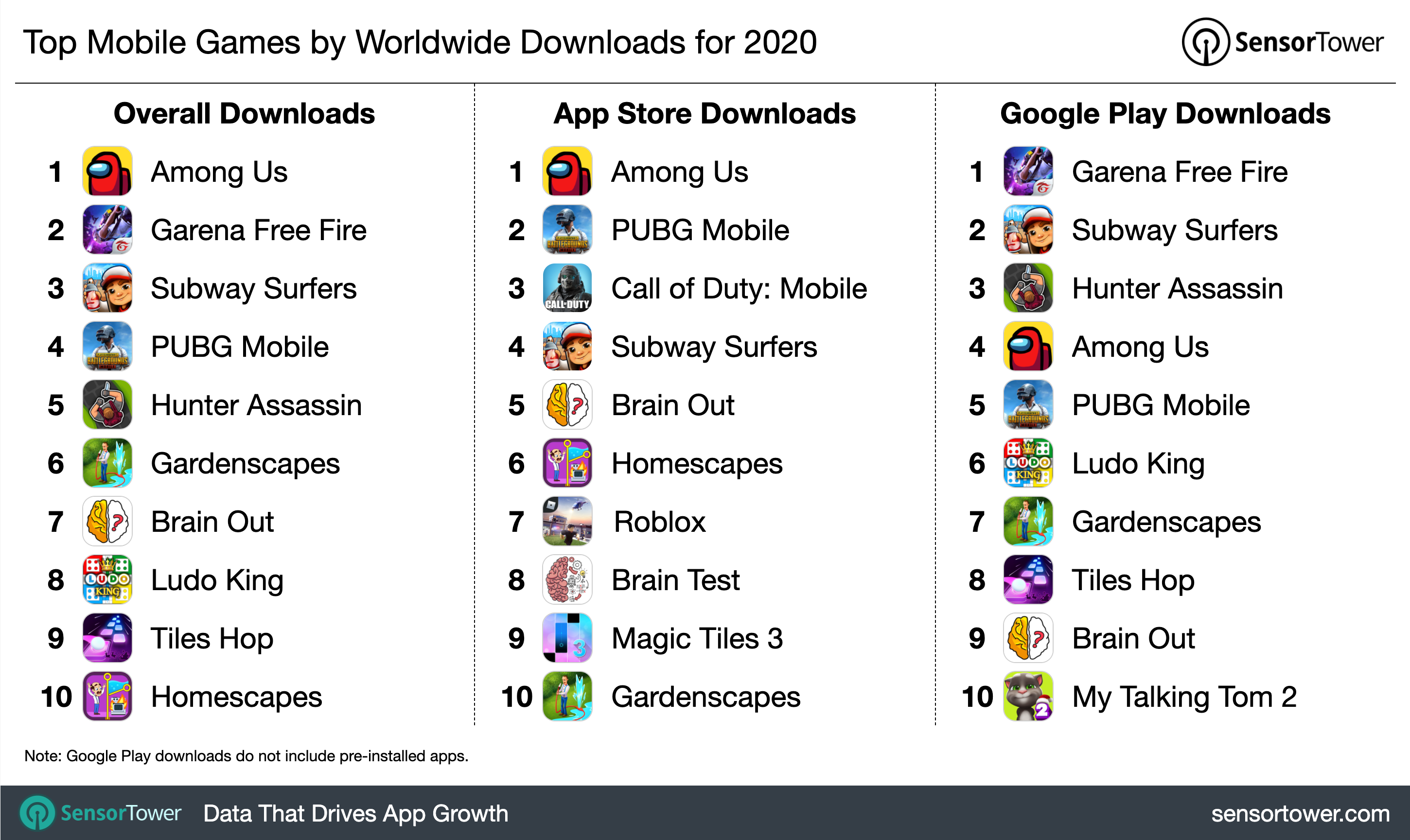STORE INTELLIGENCE · STEPHANIE CHAN · JANUARY 2021
Global Consumer Spending in Mobile Apps Reached a Record $111 Billion in 2020, Up 30% from 2019
Sensor Tower data reveals that consumers spent nearly $111 billion in mobile apps in 2020, up 30 percent Y/Y.

2020 was a record-setting year for both mobile games and non-game apps, and consumer spending on Apple's App Store and Google Play soared to new heights as users turned to their mobile devices for education, employment, and entertainment. Consumers spent nearly $111 billion globally on in-app purchases, subscriptions, and premium apps across both marketplaces, according to preliminary Sensor Tower Store Intelligence data. This figure represents 30.2 percent year-over-year growth from 2019 when app stores generated $85.2 billion.
Worldwide Mobile App Revenue and Downloads
Globally, consumer spending on the App Store reached $72.3 billion, up 30.3 percent Y/Y from $55.5 billion in 2019. As in previous years, this exceeded the amount users spent on Google Play, which grew 30 percent Y/Y from $29.7 billion in 2019 to $38.6 billion. The App Store generated 87.3 percent more in consumer spending than the Play store, and both platforms experienced roughly the same Y/Y growth. The spending gap between the platforms remained relatively flat compared to 2019.

Aside from games, Entertainment category apps saw the most user spending on the App Store, growing 29.3 percent Y/Y to $5.3 billion. On Google Play, Social was the highest-earning category, climbing 71.4 percent Y/Y to $1.2 billion last year from $700 million in 2019. TikTok, including Douyin on iOS in China, was the non-game app that generated the most revenue globally on the App Store in 2020, growing more than 600 percent Y/Y to $1.2 billion on that marketplace. On Android devices, Google One generated the most revenue last year, climbing 41.9 percent Y/Y to $444 million on Google Play in 2020.

First-time installs set a new record in 2020 as the App Store and Google Play collectively reached nearly 143 billion, up 23.7 percent from approximately 115.5 billion in 2019. This is around 14 percentage points higher than the Y/Y growth experienced by both stores in the previous year.

On the App Store, the Photo & Video category saw the most non-game app installs, climbing 8.7 percent from 2.3 billion in 2019 to 2.5 billion. On Google Play, Tools category apps saw the most installs after games, reaching 7 billion first-time downloads. This figure represents 18.6 percent Y/Y growth from nearly 6 billion in the previous year. Zoom saw the highest number of first-time installs in 2020 on the App Store, growing 1,686 percent Y/Y to 212.5 million installs on that platform. On Google's platform, WhatsApp saw the most installs last year, reaching more than 598 million installs on that marketplace.

Worldwide Mobile Game Revenue and Downloads
As our previous report noted, a record five mobile games earned more than $1 billion in 2020. The category as a whole also reached new heights, generating $79.5 billion last year across both app stores globally. This is up 26 percent from slightly more than $63 billion in 2019, and represents 71.7 percent of all in-app spending for the year. Although mobile games generated more revenue this year, its share of overall consumer spending declined approximately 2 percentage points from 2019, reflecting the growth of categories such as Entertainment in the wake of the COVID-19 pandemic. However, games still represented the majority of spending on both stores, accounting for 65.8 percent of iOS revenue and 82.6 percent of revenue on Google Play.

On the App Store, users spent $47.6 billion globally, up 25.3 percent Y/Y from $38 billion in 2019. Honor of Kings from Tencent was the highest grossing iOS game, generating $2.5 billion last year on that platform, up 47 percent Y/Y from $1.7 billion. Games on Google Play saw nearly $32 billion in worldwide consumer spending in 2020, up 27 percent Y/Y from a little more than $25 billion in the previous year. The highest grossing title on Google's platform was Moon Active's Coin Master, which saw its revenue increase 122 percent Y/Y to $799 million from 2019's total of $360 million.

First-time installs of mobile games reached 56.2 billion in 2020 across both marketplaces collectively, surging nearly 33 percent Y/Y. Due to a spike in interest in the category, the Y/Y growth last year outpaced the previous year's growth by 23 percentage points. Approximately 82 percent of all game installs or a little more than 46 billion were on Google Play, up 39.3 percent Y/Y. On Google's platform, Garena Free Fire saw the most downloads, reaching 254 million installs on that platform, down 2.5 percent Y/Y.

Games were downloaded approximately 10.1 billion times globally on the App Store in 2020, up 9.8 percent Y/Y. InnerSloth's Among Us was a breakout hit last year and was also the most-downloaded title on Apple's platform, reaching 92.8 million on Apple's platform last year.

The mobile market experienced unprecedented growth in 2020 as the pandemic dramatically—and perhaps permanently—shifted consumer needs and behavior. Our in-depth analysis of the mobile app ecosystem and its continuing trends will come later this month, including additional insights into 2020's top apps, games, and publishers.
Note: The revenue estimates contained in this report are not inclusive of local taxes, in-app advertising, or in-app user spending on mobile commerce, e.g., purchases via the Amazon app, rides via the Lyft app, or food deliveries via the DoorDash app. Refunds are also not reflected in the provided figures.


